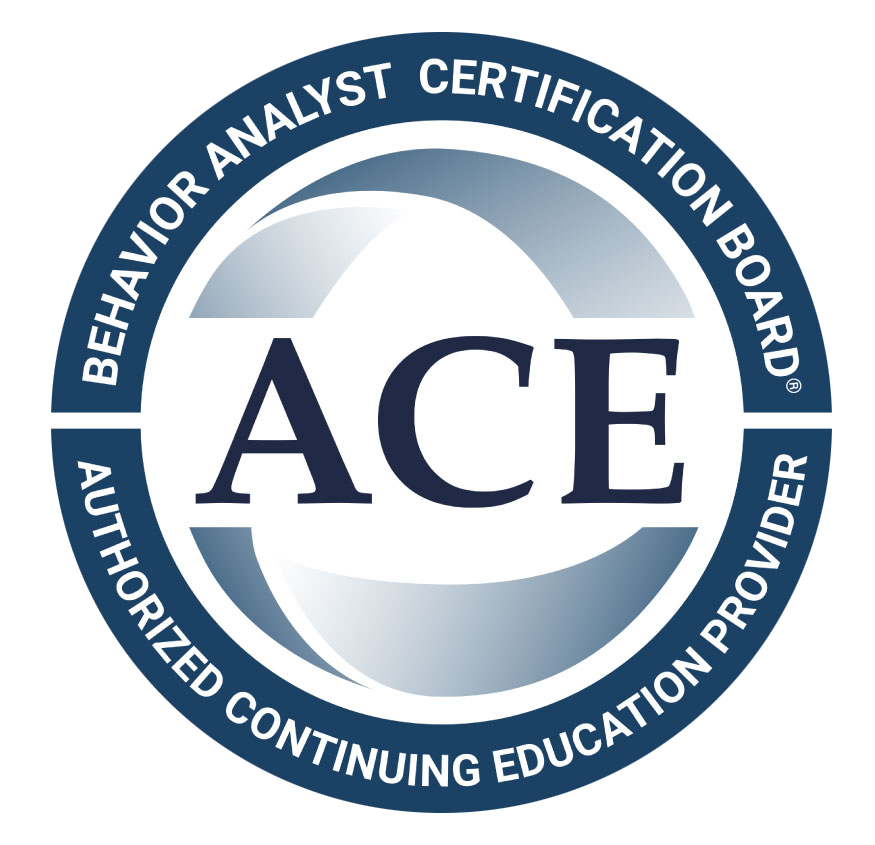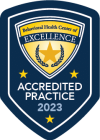Key Highlights
- The
BCBA exam does not have a fixed passing score; it is determined by the Behavior Analyst Certification Board using a method that considers exam difficulty.
- Your total score is based on 175 questions, as 10 of the 185 questions are unscored pilot questions.
- The exact number of questions you can get wrong and still pass changes with each version of the exam.
- Unanswered questions are counted as incorrect, making time management a critical exam strategy.
- Your score report will show a "level of confidence" instead of a specific percentage, indicating how close you were to the passing standard.
What Is the BCBA Exam?
The BCBA exam is the final step in earning your behavior analyst certification. Administered by the Behavior Analyst Certification Board (BACB), this comprehensive test assesses your knowledge and skills in behavior analysis. It ensures that individuals who become a Board Certified Behavior Analyst meet high professional and ethical standards.
Passing this exam demonstrates your competency to potential employers and clients. To better understand its significance, it's helpful to look at the purpose of the certification, who needs to take it, and some of the key terminology you will encounter.
Purpose of the BCBA Certification for Autism and ABA Professionals
The BCBA certification serves as a critical credential in the field of applied behavior analysis. It validates that a professional has met rigorous standards of education, experience, and examination. This certification process, governed by the Behavior Analyst Certification Board, ensures that practitioners are competent and adhere to a strict ethics code.
For professionals working with individuals with autism, this certification is particularly important. It signifies that you have the expertise to conduct functional behavior assessments, develop effective intervention plans, and use data to guide treatment. It provides assurance to families that they are receiving services from a qualified expert.
Ultimately, the purpose of the BCBA certification is to protect consumers of behavior-analytic services. By standardizing the requirements and testing the exam content thoroughly, the BACB maintains a high level of quality and professionalism among certified practitioners.
Who Needs to Take the BCBA Exam in North Carolina?
In North Carolina, any individual seeking to practice independently as a certified behavior analyst must pass the BCBA exam. This applies to professionals who design and oversee ABA therapy programs, often for individuals with autism and related conditions. The exam is a mandatory step to achieve the BCBA credential.
Before you can even register for the exam, you must meet specific eligibility requirements set by the BACB. These typically include holding a relevant master's degree and completing a significant number of supervised fieldwork hours. These prerequisites ensure that exam candidates have a strong foundation in both the theory and practice of behavior analysis.
Once these educational and experiential requirements are met and verified, you become eligible to apply for the exam. Passing it is the final gate to becoming a Board Certified Behavior Analyst, a credential recognized not only in North Carolina but across the nation.
Key Terms and Terminology in BCBA Testing
To succeed on the BCBA exam, you must be familiar with its specific terminology. Understanding these key terms will help you navigate your study materials and the exam itself more effectively. These terms define the scope and focus of the test.
The exam content is built around a framework of essential concepts in behavior analysis. Knowing what these are helps you structure your study plan and focus on what matters most. Pay close attention to the official documents provided by the BACB, as they contain the language used on the test.
Here are some of the most important terms you'll encounter:
- Task List: This document from the BACB outlines all the essential skills and knowledge a behavior analyst must have. The exam questions are directly based on these content areas.
- Content Areas: The Task List is divided into specific domains, such as measurement, experimental design, and behavior change procedures.
- Ethics Code: The Professional and Ethical Compliance Code for Behavior Analysts is heavily tested, ensuring you can make sound ethical decisions.
Structure and Format of the BCBA Exam
Knowing what to expect on exam day can significantly reduce test anxiety. The BCBA exam has a clear structure and format. It is a computer-based test administered at Pearson VUE testing centers. You will have four hours to complete the entire exam, which includes time for a tutorial and a survey.
The exam consists of multiple-choice questions designed to test your application of behavior-analytic principles. Understanding the breakdown of questions, the types you might face, and the scoring method is vital for your preparation. Let's explore these elements in more detail.
Number of Questions on the BCBA Exam
The BCBA exam consists of a total of 185 multiple-choice questions. However, not all of these exam questions contribute to your final score. This is a crucial detail to understand as you manage your time during the test.
Of the 185 questions, 175 are scored. The remaining 10 are unscored "pilot questions." These pilot questions are being tested by the BACB for potential inclusion in future exams. You will not know which questions are scored and which are pilots, so you must answer every question to the best of your ability.
This structure ensures that the exam content remains current and valid. Here is a simple breakdown of the number of questions on the test:
Types of Questions You’ll See on the Test
All exam questions on the BCBA exam are multiple-choice, but they come in various formats designed to assess your knowledge comprehensively. These questions are created by subject matter experts to reflect real-world scenarios you might face as a behavior analyst.
You won't just be asked to recall definitions. Many questions will present a clinical scenario or a set of data and ask you to apply your knowledge to make the best decision. These application-based choice questions require critical thinking and a deep understanding of the content areas.
The types of questions you might encounter include:
- Scenario-based questions describing a client's behavior.
- Questions that require you to interpret graphs or data.
- Questions that test your knowledge of the ethics code in a practical situation.
- Direct-knowledge questions asking about specific principles or procedures.
Scoring Methods Used by the BACB
The Behavior Analyst Certification Board uses a sophisticated scoring method to determine whether a candidate passes the BCBA exam. It’s not as simple as achieving a certain percentage of correct answers. The process is designed to ensure fairness across different versions of the exam.
The BACB uses the modified Angoff method, where a panel of experts evaluates each question to determine its difficulty. This process establishes a passing standard for each version of the exam. Your raw score—the number of questions you answer correctly—is converted into a scaled score. This scaled score ranges from 0 to 500.
The passing score is set at 400 on this scale. This conversion from a raw score to a scaled score accounts for slight variations in difficulty between different exam forms, ensuring that the standard for passing remains consistent over time. Therefore, the final determination is based on your scaled score, not your raw score.
How Many Questions Do You Need to Answer Correctly to Pass?
This is the big question for many exam candidates. The simple answer is that there is no fixed number of questions you must answer correctly to achieve a passing score. Because the passing standard is re-evaluated for each version of the exam, the exact number of correct answers needed can fluctuate.
The goal is to demonstrate that you have the minimum competency required to be a behavior analyst. This is determined by the scaled scoring method, not a simple percentage. Let's look closer at how the scores are calculated and what the minimum thresholds look like for successful candidates.
Published Passing Scores and Score Calculation
The Behavior Analyst Certification Board does not publish a specific passing score in terms of a percentage or a raw number of correct answers. This is because the score calculation is dynamic. The passing standard is determined for each unique version of the exam to account for differences in question difficulty.
When you receive your score report, it will indicate whether you passed or failed. Instead of a percentage, the report provides a "level of confidence" if you did not pass. This metric helps you understand how close your performance was to the passing standard.
This feedback is valuable for re-testing, as it highlights how much improvement is needed. The levels of confidence can be interpreted as follows:
| Level of Confidence | Interpretation |
|---|---|
| High | Your performance was strong and likely passed. |
| Moderate | Your performance was close to the passing standard. |
| Low | Your performance was significantly below the passing standard. |
Raw Score vs. Scaled Score Explained
Understanding the difference between a raw score and a scaled score is key to demystifying the BCBA exam results. Your raw score is simply the number of scored questions you answered correctly out of 175. It's a direct count of your correct answers.
However, your pass/fail status is not determined by your raw score. Instead, the BACB converts your raw score into a scaled score. This process, which uses the modified Angoff method, adjusts for the difficulty of the specific version of the exam you took. The scale ranges from 0 to 500, with a passing score set at 400.
This means two people could have different raw scores on different exam versions but receive the same scaled score. The scaled score provides a fair and standardized way to measure competency, ensuring that every candidate who passes has met the same high standard, regardless of which test they took. Your official score report will show your final scaled score.
Minimum Thresholds for Successful Candidates
While there isn't a magic number of questions to get right, successful candidates consistently demonstrate a comprehensive grasp of the exam content. The minimum threshold for passing is meeting the standard set by the BACB, which equates to a scaled score of 400.
Achieving this means you have shown the level of knowledge expected of a newly certified behavior analyst. Your score report will give you feedback on your performance across different content areas, which can help you understand your strengths and weaknesses.
To position yourself for success and meet this minimum threshold, focus on:
- Mastering the entire 5th Edition Task List, not just a few sections.
- Developing strong critical thinking skills to apply concepts to new scenarios.
- Consistently scoring well on high-quality mock exams.
- Understanding the BACB's ethics code deeply, as it is a significant part of the exam.
Failing Questions on the BCBA Exam, How Much Is Allowed?
So, how much room for error do you have on the BCBA exam? Since the passing score is not a fixed number, the number of failing questions allowed also varies. It's more productive to focus on maximizing your correct answers rather than calculating how many you can miss.
The score calculation is designed to identify candidates who have a solid understanding of behavior analysis across the board. Below, we'll discuss the maximum number of incorrect answers, what happens with unanswered questions, and how this should inform your exam day strategy.
Maximum Incorrect Answers Permitted
There is no officially stated maximum number of incorrect answers permitted to pass the BCBA exam. The number of questions you can miss depends entirely on the difficulty of your specific exam form and the corresponding passing standard set for it.
For example, a slightly more difficult exam version might have a lower raw score requirement to achieve the scaled passing score of 400. Conversely, an easier version might require you to answer more questions correctly. Since you won't know the difficulty level of your exam, trying to aim for a specific number of incorrect answers is not a useful strategy.
Instead of focusing on a "magic number," concentrate on the following:
- Your goal is to demonstrate competency across the entire test content outline.
- Every question is an opportunity to move closer to the passing score.
- Focus on answering as many exam questions correctly as possible.
Do Unanswered Questions Count as Wrong Answers?
Yes, any question you leave unanswered on the BCBA exam will be counted as a wrong answer. There is no penalty for guessing, so it is always in your best interest to answer every single question, even if you are unsure. Leaving a question blank is the same as guaranteeing you will get it wrong.
This rule has significant implications for your time management and overall exam strategy. With 185 questions to get through in four hours, you need to maintain a steady pace. Wasting too much time on a difficult question could prevent you from answering easier questions later in the exam.
Your best approach is to make an educated guess on questions you find challenging, mark them for review, and move on. If you have time at the end, you can return to these marked questions. This ensures you provide an answer for every item on the test, maximizing your potential to earn points.
Implications for Your Exam Strategy
Knowing that the passing threshold is dynamic and unanswered questions are marked incorrect should directly shape your exam strategy. A solid study plan combined with smart test-taking techniques can help reduce exam anxiety and improve your performance.
Effective time management is perhaps the most critical skill on exam day. You should aim to spend roughly one minute per question. This pace allows you to answer all questions with some time left over for reviewing anything you marked. Don't get bogged down; if a question is too hard, guess, mark it, and return later.
Based on this, your exam strategy should include:
- Answering every single question, as there is no penalty for guessing.
- Pacing yourself carefully to avoid running out of time.
- Marking difficult questions for review instead of getting stuck on them.
- Focusing on what you know first to build confidence and secure easy points.
- Practicing with timed mock exams to simulate real testing conditions.
Annual Changes and Updates to BCBA Exam Scoring
The Behavior Analyst Certification Board continuously works to ensure the BCBA exam remains a valid and reliable measure of competency. This involves periodic updates to the exam content and scoring procedures. While major changes are announced well in advance, the nature of the scaled scoring means there are subtle shifts with each exam administration.
Because the passing score is determined for each version of the exam, the specific number of correct answers needed to pass can change. It's important for exam candidates to understand how these dynamics work and where to find the most current information.
Does the Failure Allowance Change Each Year?
Yes, the effective "failure allowance" or the number of questions you can get wrong and still pass—can change from one exam version to another. This is not due to annual changes in policy but is a direct result of how the passing standard is set.
The BACB uses the modified Angoff method to establish a passing point for each unique exam form. This process involves experts determining the difficulty of the questions. A harder exam form might have a slightly lower raw score requirement to pass, while an easier form might require a higher raw score.
Therefore, the number of incorrect answers you can have is not a fixed target. It is a variable that depends on the specific set of questions you receive on your test day. Your focus should always be on mastering the exam content, as this is the only factor you can control.
Weighted vs. Unweighted Questions on the Exam
When it comes to your passing score, the 175 scored exam questions are essentially unweighted, meaning each correct answer contributes equally to your raw score. There are no "double point" questions or sections that are worth more than others in the final calculation.
However, it's important to remember the role of pilot questions. These 10 questions have zero weight in your score calculation. They are included for data collection purposes only. Since you cannot distinguish them from the scored questions, you must treat every question as if it counts.
Here's a summary of how questions are weighted:
- Each of the 175 scored questions carries equal value.
- Your raw score is a simple sum of your correct answers on these items.
- The 10 pilot questions are unweighted and do not affect your score at all.
- Your strategy should be to answer all questions to the best of your ability.
Where to Find Official BCBA Exam Scoring Criteria
For the most accurate and up-to-date information regarding BCBA exam scoring criteria, the official Behavior Analyst Certification Board (BACB) website is your primary source. The BACB is the governing body that creates, administers, and scores the exam, so their information is the gold standard.
On the BACB website, you can find the BCBA Handbook, which contains detailed information about the exam content, application process, and scoring. While they do not publish the passing raw score, they do explain the scaled scoring method and the use of the modified Angoff procedure.
It is crucial for exam candidates to rely on official sources like the BACB website rather than anecdotal information from forums or social media. This ensures you are preparing with the correct expectations and the most current exam policies in mind. Check the BACB website regularly for any announcements or updates.
Conclusion
As you prepare for the BCBA exam, understanding how many questions you can afford to get wrong is crucial for your success. The exam's structure and scoring methods can seem daunting, but knowing the specifics about passing scores and the implications of incorrect answers will help you devise a solid strategy. Remember that while preparing, it's essential to stay informed about any changes in exam policies or scoring criteria year after year. Stay focused, practice consistently, and don't hesitate to reach out for guidance if you need it. Best of luck on your journey to becoming a certified BCBA! If you're looking for personalized preparation strategies, consider scheduling a free consultation with our experts today!
Preparing for the BCBA exam is a major milestone, and having the right support can make all the difference.
At Connect n Care ABA, we’re passionate about helping aspiring behavior analysts and families alike understand the foundations of ABA therapy in North Carolina. Whether you’re pursuing certification or looking to improve autism support for a loved one, our team provides expert guidance every step of the way.
Ready to take your BCBA journey or your child’s ABA progress to the next level? Contact us today or join our team!
Frequently Asked Questions
How many questions can you get wrong and still pass the BCBA exam?
There is no fixed number of questions you can get wrong on the BCBA exam. The passing score is determined using a scaled score system that accounts for exam difficulty. Therefore, the raw score needed to pass can change with each version of the test. Focus on answering as many questions correctly as possible.
Is there a published passing score for the BCBA exam?
No, the Behavior Analyst Certification Board does not publish a specific passing score as a percentage or raw number. Exam candidates who pass receive a scaled score of 400 or higher. If you don't pass, your score report will show a scaled score and a "level of confidence" indicating your performance.
How many times can you retake the BCBA exam?
Candidates can retake the exam up to eight times within a two-year eligibility period after their application is approved by the BACB (Behavior Analyst Certification Board).
SOURCE:
https://www.bacb.com/bcba/
https://onlinecounselingprograms.com/mental-health-careers/how-to-become-behavior-analyst-bcba/aba-certification-explained/
https://teach.com/online-ed/psychology-degrees/online-masters-applied-behavior-analysis/aba-certification/
https://www.reddit.com/r/bcba/comments/yhzohq/what_is_the_most_you_can_get_wrong_on_the_bcba/
https://passthebigabaexam.com/what-is-the-bcba-exam-pass-rate/









